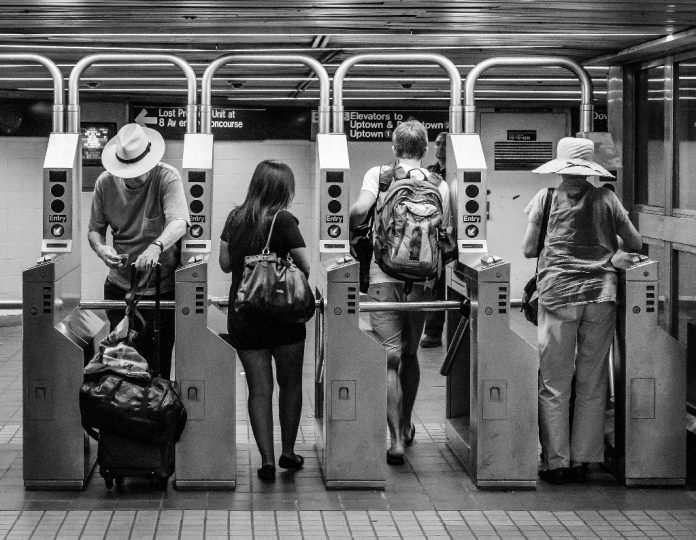Finally NYC is tossing out its floppy, flimsy plastic MetroCards in favor of a tap payment system for its public transportation lines. That means less of a chance for a misread at the subway turnstile and one less opportunity for the locals to out you as a visitor the next time you’re in town.
The Metropolitan Transportation Authority moved to do away with the famous yellow MetroCard on Monday when the agency’s Finance Committee voted unanimously to update to a tap-and-go system similar to the Oyster card used in London. On Wednesday, the full MTA board voted to award a $573 million contract to Cubic Transportation Systems for them to design and implement the new system. The company manages the current MetroCard as well as the London version the MTA wants to model their next-generation payment system off of.
The new payment system will let riders pay using their smartphones, digital wallets, or proprietary cards loaded with a refillable payment account. The city hopes to phase in the new payment system to 500 station turnstiles and 600 buses by the spring of 2019 and launch city-wide by 2020.
To ease the transition, people will still be able to use the current MetroCard through 2023.
“The move to a truly 21st century method of payment represents a critical step in our overall efforts at modernizing the subway system and improving service for all our customers,” said MTA Chairman Joseph Lhota in a statement. “The subway, bus and commuter rail network is the lifeblood of our regional economy and major upgrades like this help make the system more convenient and efficient for the millions of New Yorkers who use it every day.”
More than just a boost in convenience, the overhaul will also give authorities power to explore new fare policies and structures to improve the service, according to the Regional Plan Association.
In a policy brief published last year, the association outlined some of the benefits such as an “open loop” system could bring. It could speed up buses by allowing for all-door boarding. Even farther, the MTA could play with fare models to make public transportation more affordable, ie. giving discounts to bus-only riders. And even more creatively, they could implement pricing incentives in real-time to lure commuters onto alternate subway lines when another line is congested or delayed. It’ll be interesting to see what other ideas the agency can come up with given all the new insight the new system is set to bring.











